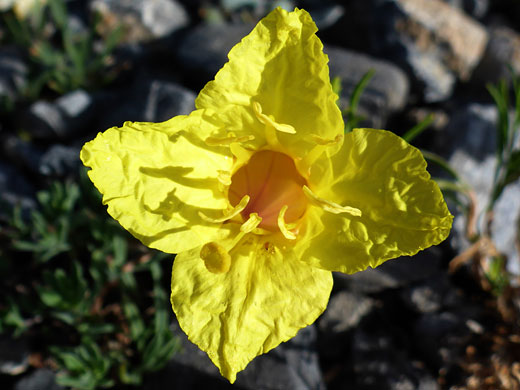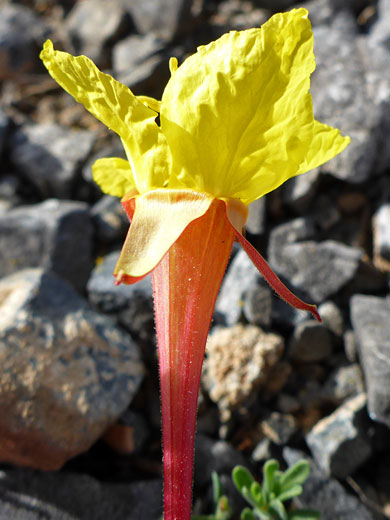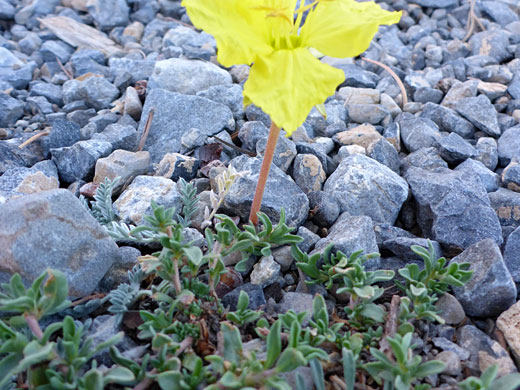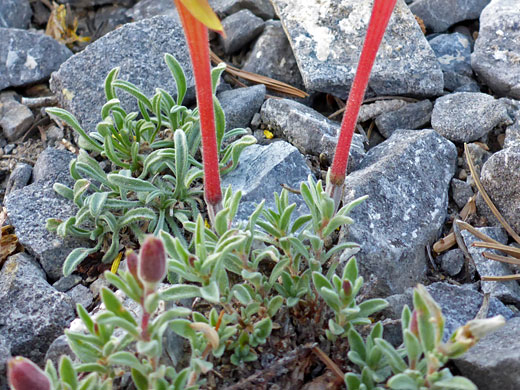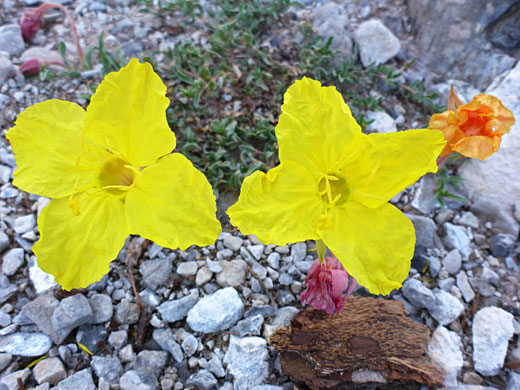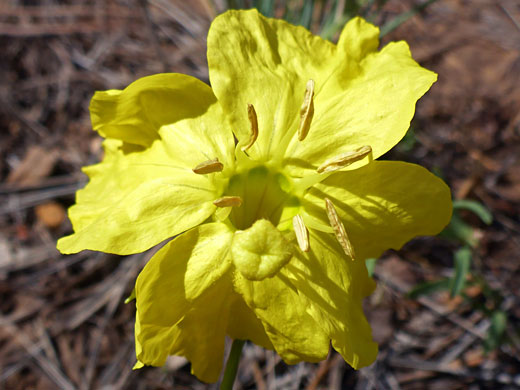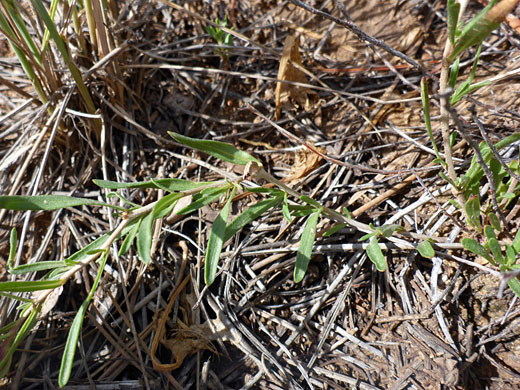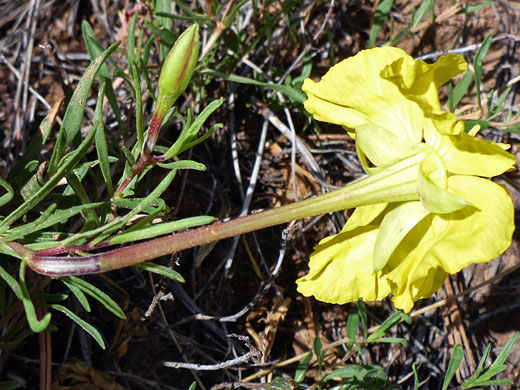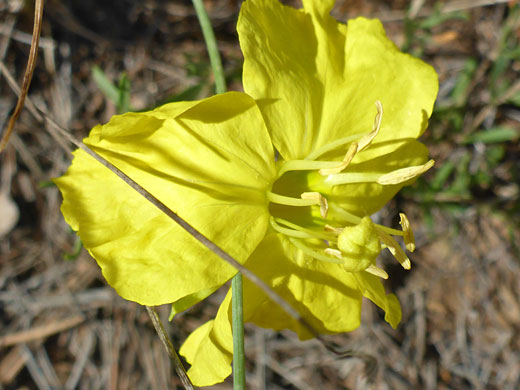Calylophus Lavandulifolius, Lavender-Leaf Sundrop
Plants > Wildflowers > Onagraceae > Calylophus Lavandulifolius
Common name:
Lavender-leaf sundrop
Family:
Scientific name:
Calylophus lavandulifolius
Synonym:
Oenothera lavandulifolia
Main flower color:
Range:
Nevada, east across the Four Corners states to west Texas and the southern Great Plains
Height:
Up to 8 inches
Habitat:
Dry, open places; rocky, sandy or gravelly, from 3,500 to 8,500 feet
Leaves:
Alternate, unlobed, closely-spaced, linear to narrowly lanceolate, up to 2 inches long
Season:
May to August
Calylophus lavandulifolius is a low growing plant in the evening primrose family, with small, inconspicuous stems and leaves, though is easily spotted when in bloom owing to the large yellow flowers, up to 2 inches wide, at the tip of slender tubes (the hypanthium) of up to 5 inches. Petals have slightly irregular margins, and they wither to orange then purple. The four lance-shaped sepals are pale yellow, and recurved when mature. Sepals and ovary have a covering of short, spreading hairs. Buds are greenish, striped with red. The eight yellow stamens are exserted, as is the (longer) pistil, which is toped by a four-lobed, disc-shaped stigma. Flowers are solitary, from the upper leaf nodes.
Leaves and stems also have a covering of short, greyish hairs. Unlike many other evening primrose species, calylophus lavandulifolius blooms during the day, and it often forms colonies of dozens of plants.
Leaves and stems also have a covering of short, greyish hairs. Unlike many other evening primrose species, calylophus lavandulifolius blooms during the day, and it often forms colonies of dozens of plants.
All Contents © Copyright The American Southwest | Comments and Questions | Contribute | Site Map


